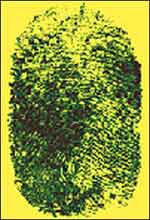Information Technology
Here you can find a summary of innovations in the fields of information and data processing and up-to-date developments on IT equipment and hardware.
This area covers topics such as IT services, IT architectures, IT management and telecommunications.

NASA To Decommission Tropical Rainfall Measuring Mission
NASA will decommission the Tropical Rainfall Measuring Mission (TRMM) later this year. A highly successful scientific research mission, TRMM has provided data used worldwide in the monitoring and forecasting of hazardous weather on a demonstration basis. Originally intended to be a three-year mission when launched in 1997, TRMM is now in its seventh year of operation having completed all of its research and technology objectives four years ago. The extension of mission operations for nearly four add

Galileo moves forward
The GalileoSat development and in-orbit validation phase is well under way and the European Space Agency (ESA) has just released its procurement process to Industry indicating that the first completely civil satellite navigation system is moving forward.
Galileo Implementation: a phased approach
The Galileo Programme is being implemented in three phases:
Definition phase
Development and in-orbit validation
Full Deployment and Operations
The Definition phase was c

Framing the reuse of digital cultural heritage
Complicated intellectual property rights and technical standards for digital content are potential barriers to accessing Europes incredibly rich cultural assets. However EMIIs Distributed Content Framework (DCF) is a step towards lowering these barriers.
The EMII-DCF project was developed with funding from the IST programme by the European Museums Information Institute (EMII). A collaborative, virtual network EMII connects key cultural institutions in the European Union. Its main objective

Getting Lost Becomes A Thing of the Past
Getting lost in strange towns and cities or trying to find the right way to a particular destination is no longer a problem due to new navigation software that provides on the move information for drivers and pedestrians within seconds.
Developed with the help of almost £1.3 million from the Information Society Technology (IST) Programme of the European Union’s Framework Programme, PEPTRAN gives drivers and mobile users information on the best possible routes within seconds, using their sm

NIST standard adopted for across-the-road radar
Researchers at the National Institute of Standards and Technology (NIST) have developed a new performance standard for “across-the-road” radar speed-measuring device systems to help law enforcement agencies to purchase and use with confidence this relatively new method for catching speeders.
Unlike conventional “down-the-road” radar speed-measuring devices, across-the-road radar systems do not require an operator and can be programmed to detect and record vehicles traveling above a predete

Computerized fingerprint matching is highly accurate
Computerized systems that automatically match fingerprints have become so sophisticated that the best of them are accurate more than 99 percent of the time, according to the most comprehensive known study of the systems ever conducted.
Computer scientists at the Commerce Department’s National Institute of Standards and Technology (NIST) tested 34 commercially available systems provided by 18 companies from around the world. NIST conducted the testing to evaluate the accuracy of fingerprin